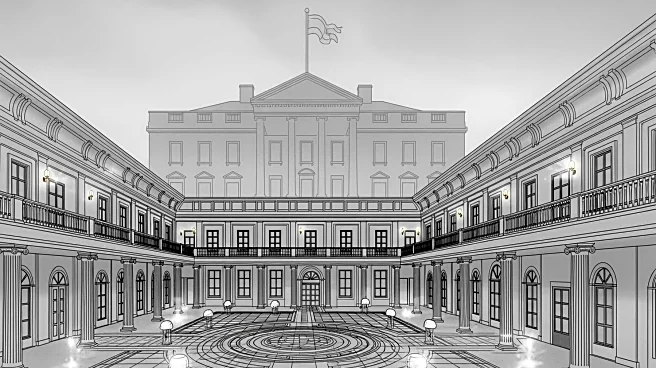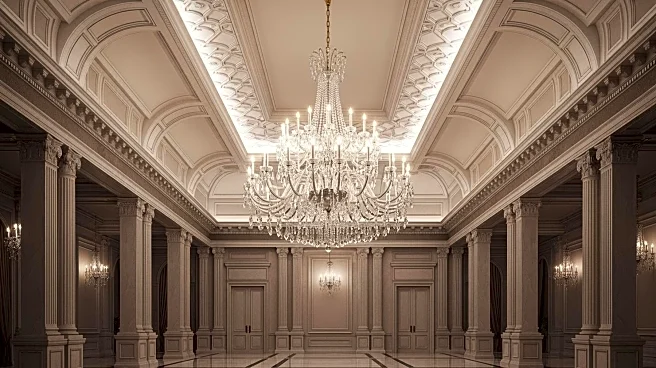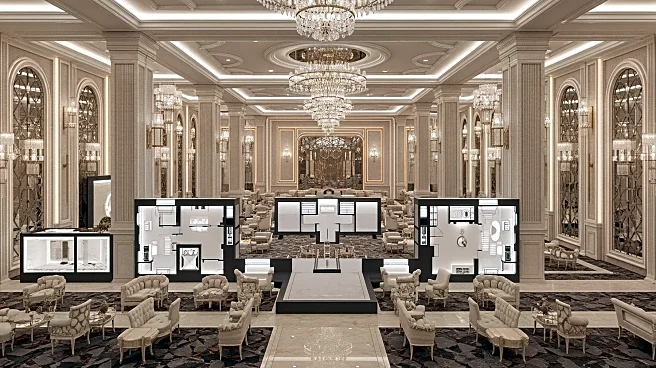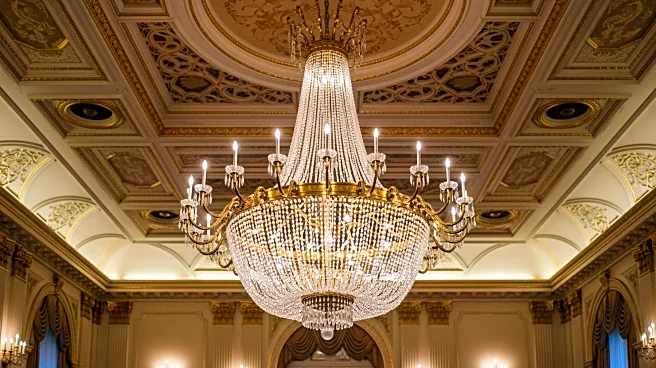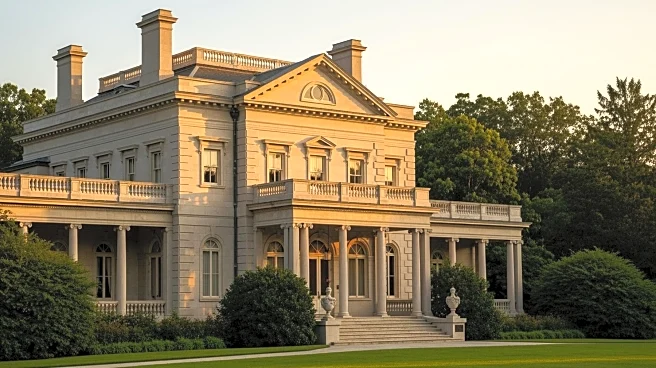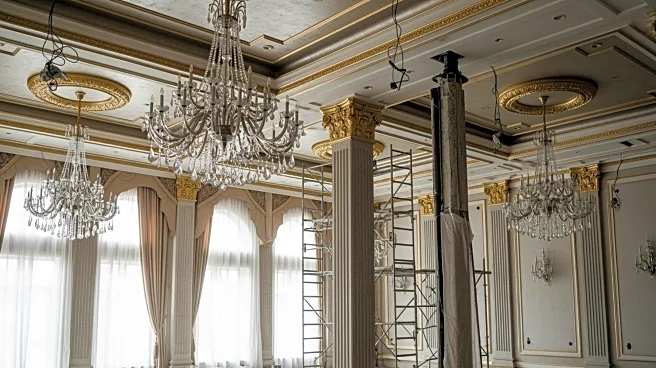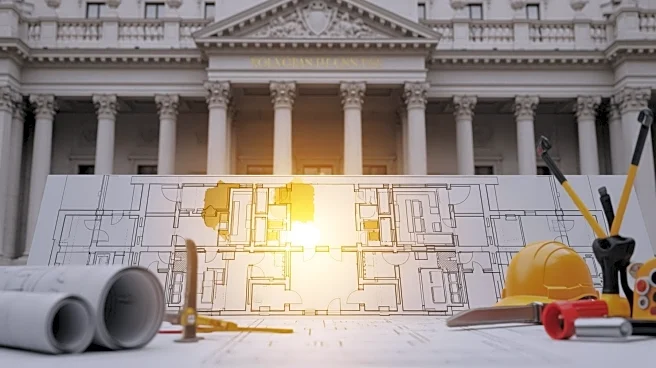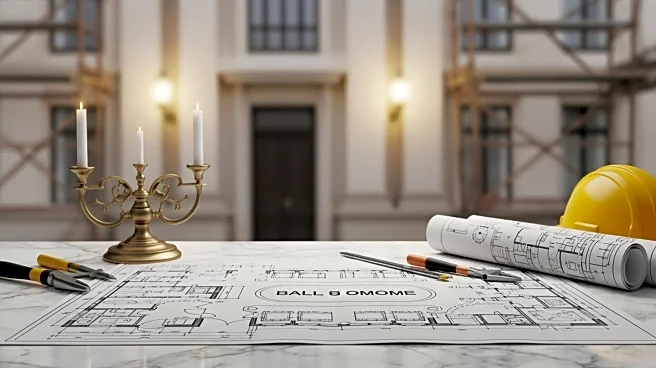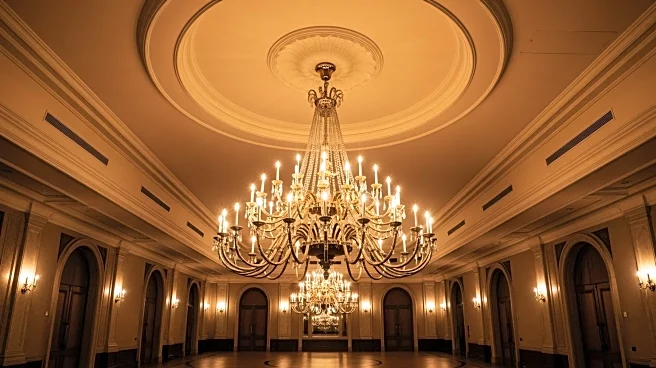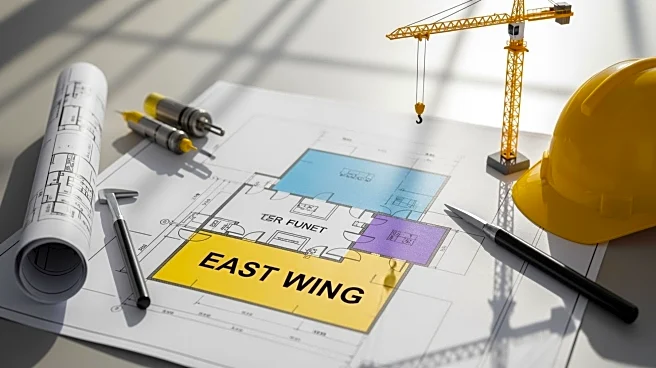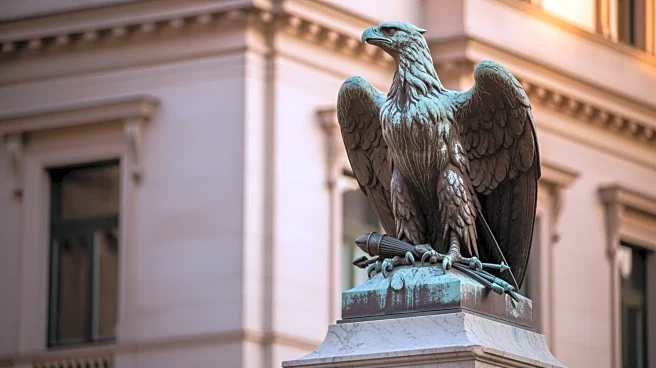What's Happening?
President Trump has commenced the construction of a new ballroom at the White House, marking a significant architectural expansion. The project officially broke ground on Monday, resulting in the demolition
of the East Wing within four days. Despite initial assurances that the ballroom would not interfere with the existing structure, the new addition is set to be the largest ever, nearly doubling the footprint of the main section of the White House. The East Wing, previously housing a movie theater, offices for the First Lady, and calligraphy offices, will be replaced by the ballroom, new offices, and guest suites. The ballroom is designed to seat almost 1,000 people, an increase from earlier estimates. The expansion, backed by private donors, is projected to cost upwards of $300 million, a revision from the initial $200 million estimate.
Why It's Important?
The construction of the new ballroom represents a significant shift in the architectural landscape of the White House, reflecting President Trump's preference for classical and traditional styles. This expansion could influence future federal building designs, as Trump has issued an executive order promoting such styles. The project, funded by private donors, underscores the administration's ability to leverage private capital for public projects. The suspension of public tours due to the construction may impact public access and transparency, raising questions about the balance between private interests and public heritage. The substantial investment in the ballroom also highlights the administration's prioritization of aesthetic and functional enhancements over other potential uses of funds.
What's Next?
The completion of the East Wing project is anticipated before the end of President Trump's term. As construction progresses, further details about the layout and design may be released, potentially sparking public and political discourse on the project's implications. The new ballroom could become a venue for significant political and diplomatic events, influencing the White House's role in national and international affairs. Stakeholders, including political leaders and civil society groups, may react to the project's impact on public access and historical preservation. The architectural changes may also prompt discussions on the future direction of federal building designs under Trump's executive order.
Beyond the Headlines
The expansion of the White House through private funding raises ethical considerations regarding the influence of private donors on public institutions. The project's alignment with classical architectural styles may reflect broader cultural and political values, potentially influencing future government building projects. The suspension of public tours could lead to long-term shifts in public engagement with the White House, affecting its role as a symbol of national heritage. The emphasis on aesthetic enhancements may also prompt debates on the prioritization of resources in government spending.
